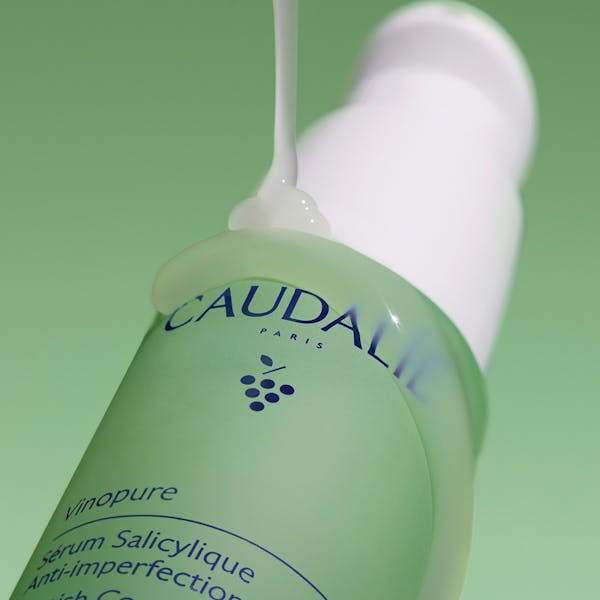Acne symptoms can emerge in a host of confusing ways, and whiteheads are a common sign of the condition. Like pimples, they form when oil and dead skin cells meet. Like blackheads, they aren’t inflamed or infected. Unlike blackheads, however, they are covered by a layer of skin, which prevents oxidation and bacterial growth. Their white hue simply means the blockage hasn’t been exposed to air. Whether yours are caused by genetics, hormone surges, or oily cosmetics, the top treatment goal is to regulate cell shedding and sebum production.
Summary
What are whiteheads?
Whiteheads are small white bumps that form when pores become clogged with sebum and dead skin cells. Unlike inflamed pimples, whiteheads are closed comedones covered by a thin layer of skin, which keeps them from turning red or swollen.
They are often confused with milia, which also appear as small white spots. However, milia are keratin-filled cysts usually found around the eyes or nose, unrelated to oil or hormones. Whiteheads, by contrast, are acne-related and can become painful or leave scars if picked at. Treating them gently is key to avoiding inflammation and long-term damage.
What causes whiteheads?
The main cause of whiteheads is a blockage of sebum and dead skin cells within pores. Hormonal changes play a central role, which is why breakouts are common during puberty, pregnancy, menopause, or in cases of polycystic ovary syndrome. Genetics also contribute significantly, so if your parents experienced whiteheads, you may be more prone to them as well. In addition, comedogenic cosmetics can aggravate the problem by further blocking pores. Finally, lifestyle factors such as stress, lack of sleep, or inadequate cleansing habits can increase the likelihood of developing whiteheads.
Because these blockages are not exposed to air, they remain white instead of darkening like blackheads.
How to treat them?
Effective whitehead treatments target clogged pores and excess oil. Retinoids are among the most effective options because they improve cell turnover, prevent pore blockages, and help the skin heal more quickly. Salicylic acid is another excellent treatment, offering gentle exfoliation that clears pores without excessive irritation. Benzoyl peroxide can also be effective, though it tends to be more drying than salicylic acid. Steroid creams, on the other hand, are more suitable for inflammatory acne than for whiteheads.
For isolated cases, a professional beautician can safely perform an extraction. When whiteheads appear more frequently or in patches, a consistent skincare routine is far more effective and sustainable.
How to prevent whiteheads?
Prevention relies on keeping pores clear and controlling oil production. Washing the face twice daily with a gentle cleanser helps remove impurities, while choosing non-comedogenic cosmetics avoids further clogging of pores. Regular exfoliation with salicylic acid reduces the risk of blockages, and maintaining good lifestyle habits such as stress management and adequate sleep lowers the risk of hormonal surges that can trigger acne. Above all, resisting the temptation to squeeze or pick whiteheads is crucial to preventing inflammation and long-term scarring.
Vinopure skincare routine for acne-prone skin
The Caudalie Vinopure Acne-Prone Skin collection offers a complete daily routine tailored for blemish-prone skin. It begins with the Gel Facial Cleanser with Salicylic Acid, which removes excess sebum and impurities while gently exfoliating. This is followed by the Salicylic Acid Toner, which tightens pores and prepares the skin for treatment. The next step is the Salicylic Acid Serum, designed to unclog and refine pores while reducing blemishes. Its effectiveness has been clinically proven: 86% of users see a reduction in their spots in just 7 days*. To complete hydration without shine, the Mattifying Moisturiser provides lightweight moisture while preventing pore blockages. Finally, the Salicylic Spot Solution delivers targeted action on individual whiteheads with the help of tea tree oil and salicylic acid. This treatment reduces localised spots in just 4 hours**.
This routine is vegan, dermatologist-tested, and packaged sustainably, offering effective results without compromising on ethics or safety.
When to see a dermatologist?
In most cases, over-the-counter skincare products clear whiteheads within a few weeks. However, if whiteheads persist, become inflamed, or evolve into painful cysts, a dermatologist’s expertise is needed. Professional guidance is also valuable if scarring or dark spots begin to appear, since dermatologists can provide treatments to reduce hyperpigmentation and prevent long-term marks. A tailored treatment plan may include stronger topical creams, oral medication, or professional extraction.
Whiteheads are a mild but common form of acne caused by clogged pores filled with sebum and dead skin cells. They may appear due to hormonal changes, genetics, inappropriate cosmetics, or lifestyle habits. Although less severe than inflamed acne, they can still cause discomfort and scarring if not treated properly.
Consistent use of gentle, evidence-based skincare such as the Vinopure collection makes it possible not only to treat whiteheads but also to prevent them from returning. For more severe or persistent cases, consulting a dermatologist ensures safe and effective long-term results for clear, healthy skin.
*Clinical study, % satisfaction, 43 volunteers
**Clinical study, self-assessment, 22 volunteers
LATEST BEAUTY NEWS
- Personal data & Cookies
- T&C
- Legal Note
- Loyalty Program
- MYCAUDALIE terms
© Caudalie Copyright









